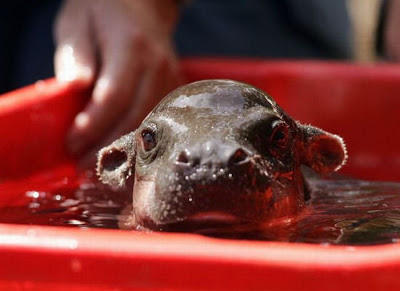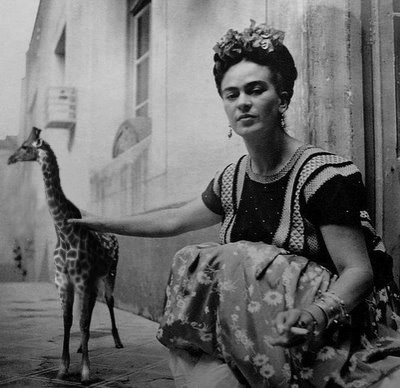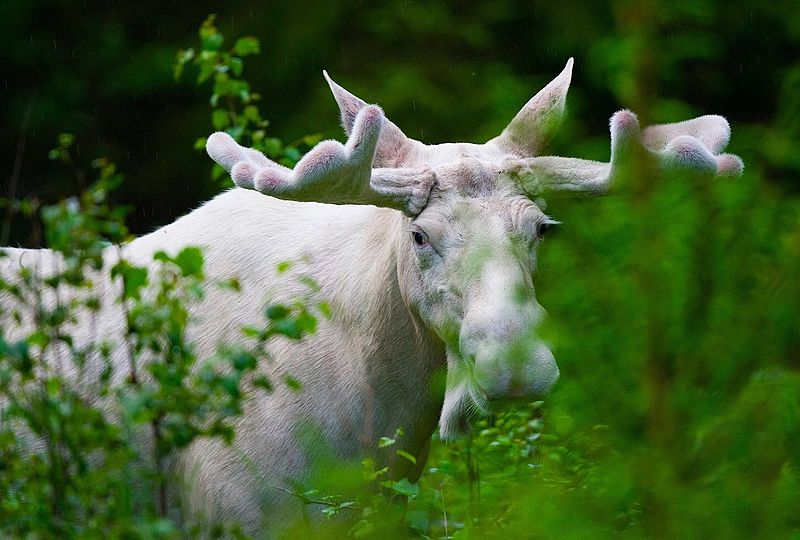Two Truths and a Lie: Unit Teaser
It is amazing how many different creatures lurk around us that most of us are totally unaware of.
For instance, did you know that many homes in Canada have tiny house hippos hiding away in the dark recesses of the closet, under the bed, in the pile of laundry, and in the kitchen pantry? While cuter than bed bugs, they really can create a lot of damage if you are not careful. Then of course there is the petite lap giraffe. They are so docile, quiet and unassuming that most people just think they are a fantasy of the rich and famous. And let’s not forget the Spirit Moose, so seldom seen, that it is often thought of as the Maritime’s answer to the West Coast yeti, as surely it must be a mythical creature.
These are just a few of the seldom seen creatures that we share this planet with. In today’s lesson, we will be studying these creatures a little more closely.
House Hippo (Hippopotamus amphibius domum)
House Hippos are reclusive and nocturnal mammals. They “physical resemble pigs and other terrestrial even-toed ungulates, however, their closest living relatives of the Hippopotamidae are cetaceans (whales, porpoises, etc.) from which they diverged about 55 million years ago.” They are grey in colour, have short legs and short ears, a large rotund belly, and rather large teeth. The House Hippo is the smallest of the Hippoptamidae, at largest growing to the size of a woman’s hand at 6.77″. House Hippos of this size are quite rare though, with the normal range in size being between 4 – 5”.
While most House Hippos are timid in nature, on very rare occasions there are accounts of one joining the family.
Sounds
House Hippos tend to communicate in a series of roars and grunts. While the house hippo is often quite quiet in the day, they tend to be more vocal in the dead of night, when the human inhabitants of the house are asleep. Often when humans are awoken by them, their calls are mistaken for that of neighbourhood frogs.
Habitat
Most of the time, House Hippos will be found in the dark recesses of homes, including closets, under beds that are nestled against the wall, under the couch, kitchen pantries … etc. Bedroom closets are definitely a favourite spot of House Hippos for building their nests, as they like to us misplaced clothing, lint from the drier, and any other bits of stray fabric that they can find. Usually if you are missing one of your socks, this is where it is.
As House Hippos, like other Hippopotamidae, are semi-aquatic, they are more apt to dwell in homes with other non-human mammals living there, like cats and dogs, as they like to soak in their water dishes at night.
Diet

Water is also important for the House Hippo’s diet, they drink a lot. On the odd chance you see a House Hippo active during the day, it is usually to go in search of water. Like other Hippopotamidae, House Hippos are herbivorous. Their favourite foods are raisons, chips, and the crumbs from peanut butter on toast.
Geographic Range
Throughout Southern Canada and the North Eastern United States.
Petite Lap Giraffe (Giraffa parva lap)
The Petite Lap Giraffe are an even-toed ungulate mammal of the Family Giraffidae and Genus Giraffa. They are characterized by their extremely long neck and legs, their horn-like ossicones, and their distinctive patchwork coat patterns of orange, brown and cream. Petite Lap Giraffe is the least seen and well known of this Genus, simply due to their small size and shy nature, making them masters of camouflage in their natural habitat. The average adult reaches 76 cm in height and baby 15 cm. They are usually quite lean creatures, weighing approximately 4.5 kg, although a pregnant female can weigh up to 5.44 kg.

Most people thought their existence to be a myth, until a Russian circus captured one. As the circus was not terribly humane in their treatment of the Petite Lap Giraffe in their care, another circus performer by the name of Nicholas Sokoblovsky fled the circus with the Petite Lap Giraffe. Nicholas went on to establish Sokoblovsky Farms, a sanctuary for mistreated Petite Lap Giraffes and breeding facility for domestic Petite Lap Giraffes. Due to the 420 day gestation period and the limited breeding pool of Petite Lap Giraffes in captivity, most of the newborn Petite Lap Giraffes on the farm have been fostered to wealthy families that can afford the high fee that has helped to keep Sokoblovsky Farms operating for generations of the family – both human and giraffe.

Habitat
Common to the giraffe family, in the wild Petite Lap Giraffes usually inhabit savannahs and open woodlands.
While it has been found that Petite Lap Giraffes can easily be house trained for family living, they tend to thrive in quieter homes and prefer classical music.
Diet
As with all giraffe, Petite Lap Giraffes are herbivorous eating twigs, leaves and bark, as well as shrubs, grass and fruit. While it has been suggested that in captivity that Petite Lap Giraffe’s enjoy bonsai leaves and distilled water, in the wild Petite Lap Giraffe’s preferred diet are the leaves of the Acer buergerianum, also known as the Trident Maple.
Geographic Range
Petite Lap Giraffe geographic range mirrors that of their preferred diet, the Acer buergerianum, which is native to eastern China (from Shandong west to southeastern Gansu, south to Guangdong and Taiwan, and southwest to Sichuan) and Japan.
Spirit Moose (Alces alces spiritus)
The First Nations near the community of Foleyet in Northern Ontario share stories of a sacred animal, a moose that is ghostly white, a moose they call the Spirit Moose. Now you might think that this moose was simply an albino, but unlike albino moose, which are a rare phenomenon, these moose have brown eyes, not the pink eyes of albinos. Some of them also have flecks of brown fur, and a few are patchy with white and brown coats. Perhaps a different species of moose? No, rather a recessive gene strain called the Armstrong White Gene Strain, that results in their white fur. This gene strain was first discovered by Jane Armstrong who began to study the white moose in Foleyet in the 1960s.
The Spirit Moose is like other Alces alces in all other aspects, other than it’s white coat. It is the largest living species of the deer family, on average, an adult moose stands 1.4–2.1 m (4.6–6.9 ft) high at the shoulder. Adult males are noted for their broad, flat (or palmate) antlers. They tend to be solitary and slow moving herbivores, but can be aggressive if startled or angered.

Sounds
Often moose calls are heard during mating season. Males will produce heavy grunting sounds, while females produce wail-like sounds. Below are the grunts of a male moose.
Diet
Moose enjoy dining on both terrestrial and aquatic vegetation. This includes, but is not limited to lilies, pondweed, herbaceous flowering plants, fresh shoots, occasionally tree bark …etc.
Geographic Range
While Spirit Moose have been more formally identified in the area around Foleyet in Northern Ontario, sightings of white moose have been reported across Canada and the North Eastern United States, as well as in Europe. Many of these sightings have been reported to be albino moose, but if you look at the video and photographic imagery from these sightings, many of these moose have brown eyes, including white moose sightings on Cape Breton and Newfoundland, and in Sweden and Norway. There is also anecdotal stories from locals that suggest a larger non-albino population of white moose near the town of Arvika in Sweden.
Really???
“Ummm …. hang on a minute here! Is any of that true??? Are these creatures really real???”
“I’m glad you asked and are questioning what you are reading. Some of what you read above is true, and some is fake news. Click on the button below and join the discussion in determine what above is real and what is fake.”
